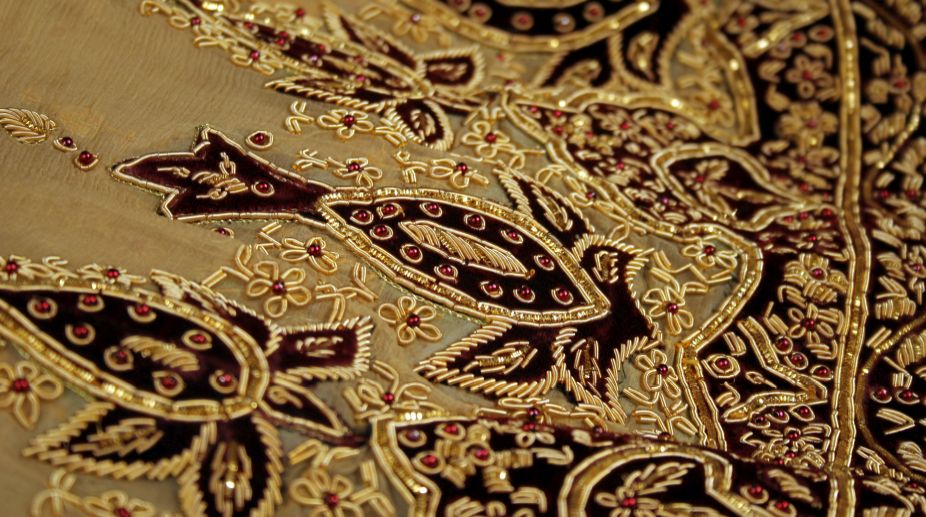Often called 'Paintings in Embroidery', the art of Chamba rumal is losing its relevance and the skills required for it are fast disappearing.
A skilful blend of painting and embroidery, these handkerchiefs are handcrafted by artisans and are a beautiful representation of the rich art traditions of Himachal Pradesh.
Earlier, Pahari miniature artists used to draw the outlines on fine handspun and hand woven unbleached muslin. Traditionally, women of the upper classes then embroidered upon these compositions using untwisted coloured silk floss.
Advertisement
The double satin stitch technique used is known as do-rukha and ensures exact duplication of the image on the reverse.
The elaborate floral borders, ornamentation, portrayal of figures and animals reflect the sophistication of these miniature paintings.
An ongoing exhibition here infuses a fresh lease of life into this dying art.
The exhibition "Raas: Life to a Dying Art", being organised by Delhi Crafts Council, is on at the India Habitat Centre till April 8.
"It would have been a pity if this beautiful art form was left to die. In the absence of any institutional support or avenues to help them market their art form, many artisans had given up this tradition," a representative of the Delhi Crafts Council said.
"However, we decided to renew this tradition and revive it by initiating a series of measures, including training and skilling of artisans in this traditional art form, and efforts to popularize them," she added.
These rumals (handkerchiefs) are embroidered square cloths from chamba. They are generally used for covering platters, as gifts for auspicious occasions and for offerings to a deity.
During weddings, rumals are exchanged between the families of the bride and groom as a token of goodwill.
The exhibition here is showcasing a range of these handcrafted 'rumals' along with honouring artisans and craft persons, who have endeavoured to keep this unique art form alive.
A detailed study of old rumals in the collections of various museums across the country and abroad was undertaken for the show.
A core collection of selected rumals was then re-created by the artisans from Chamba and exhibited at various cities across India.
Advertisement











